Cognitive Behavioral Therapy
Published on October 18th, 2022
Updated on January 2nd, 2024
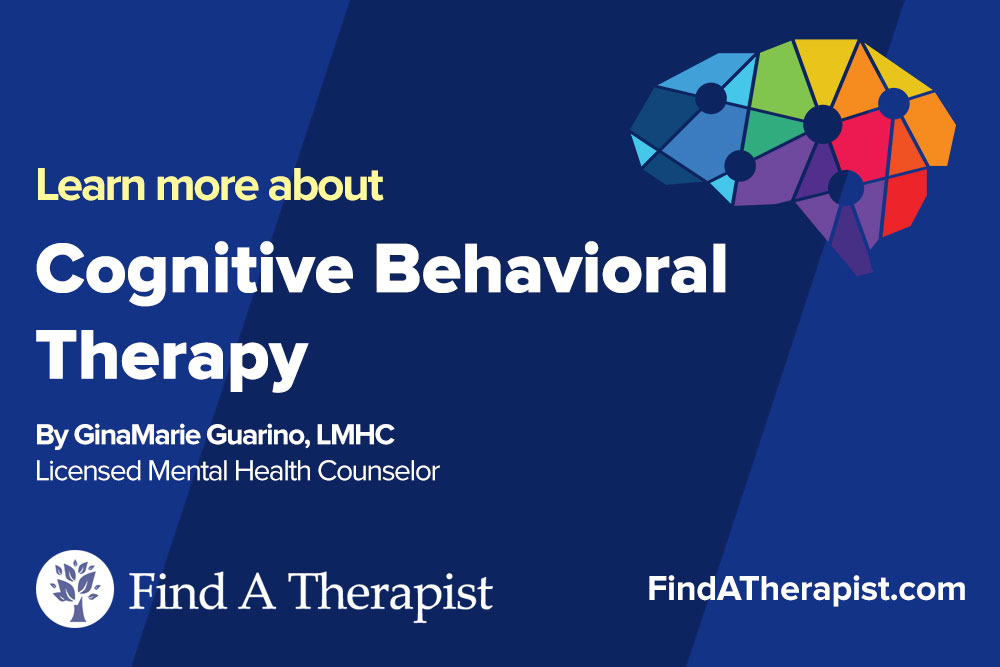
Contents
A popular form of therapy that therapists will utilize to help their clients is called cognitive behavioral therapy. Cognitive behavioral therapy can help people understand how their thoughts contribute to their feelings about themself and how their self-talk affects their mood and behavior. It is a process that can help people learn about how they contribute to their mental health challenges. It also teaches methods of reframing thoughts and belief systems to promote healthy coping and behavior.
According to the concepts of cognitive behavioral therapy, distorted thinking accounts for emotional, behavioral, and interpersonal challenges. It also contributes to a person’s ongoing issues with self-esteem and their outlook on the world and the future.
Sponsored by

Choose a therapist to work with and start healing with 20% off from BetterHelp.
Click HereCognitive behavioral therapy is based on the principles of cognitive theory. It adopts the concepts of the cognitive model, which focuses on three components:
- Thoughts
- Feelings
- Behavior
Dr. Aaron Beck: The Founder of Cognitive Therapy

Cognitive behavioral therapy was developed by American psychiatrist Dr. Aaron Beck in the mid-1960s. Beck initially developed cognitive behavioral therapy to help with depression and anxiety disorders. Since then, it has been applied to other mental health disorders with success.
Through his studies, Beck discovered that depression and anxiety stem from negative thoughts. Negative thoughts and streams of negative self-talk were habitually experienced and reported by his patients.
The negative thoughts people experienced are referred to as automatic negative thoughts. Automatic negative thoughts tend to focus on the self, the world, and the future. These three components are referred to as the cognitive triad.
The Cognitive Triad
Cognitive behavioral therapy reshapes how people receive and interpret information in the cognitive triad. This model suggests the three components will directly affect each other. If a person has a negative self-image, they will also have a negative view of the world and their future.
The cognitive triad consists of 3 main components:
- The self
- The world
- The future
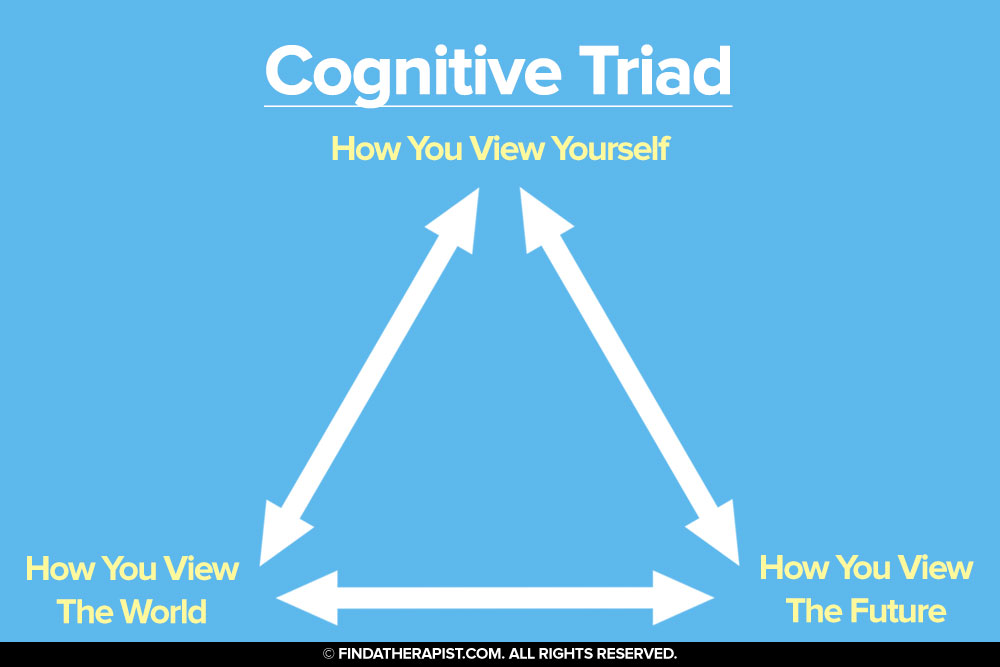
The cognitive triad suggests the following:
The lens through which a person sees one component affects the way they see the other two components. If a person has a negative image of the world, they also have a negative impression of the future and themselves. If they have a negative image of the future, they also have a negative image of themselves and the world, and so on.
An Illustration Of The Cognitive Triad
Alice is a twenty-six-year-old woman who works as a secretary at a doctor’s office. She is single and still lives with her parents. She is unhappy with her job but thinks that she is stuck there and cannot find another one. Alice also thinks that no one in her office likes her and that she has no friends. She has not had a date in months and wonders if she will ever have a boyfriend.
She rarely goes out unless she goes to the movies by herself. She believes she fails at everything she does and that everyone and everything in life is against her. No matter what she does, she always feels miserable.
Alice feels lonely, does not think positively, and sees very little hope for her life ever getting better. She has felt more and more depressed as weeks go by and thinks that there must be something wrong with her.
Whether we feel happy, depressed, anxious, angry, guilty, or surprised, we feel the way we do because of the way we think. Sometimes, things happen so quickly that we do not even recognize or know that we are having these thoughts. We have become so used to them that we do not notice them.
Our brain has created shortcuts used when we interpret situations so that we can respond to them as fast as possible. These shortcuts are our automatic thoughts, which are the reasons we feel certain ways in different situations.
Although automatic thoughts are meant to help us, not all of them are useful. Alice has many thoughts that mental health professionals have identified as the “cognitive triad of depression.” People who are depressed usually have very negative views of themselves, their situations and those around them, and the future.
When depressed, we often think that we are worthless and incompetent and that no one likes us. We view our daily lives as full of obstacles and challenges that will never be overcome and that always result in failure. We never do anything right. The future seems to be hopeless, and nothing that we can do will ever change it.
Beck discovered that if his patients can identify their automatic negative thoughts, they can learn how to challenge them. They can challenge their automatic negative thoughts with the objective reality of a situation. When done correctly, their emotional and behavioral reactions become less intense.
With this discovery, Beck developed cognitive behavioral therapy. Cognitive behavioral therapy adopts the core concepts of the cognitive model. It is a form of therapy that derives from cognitive psychology.
How Cognitive Behavioral Therapy Works
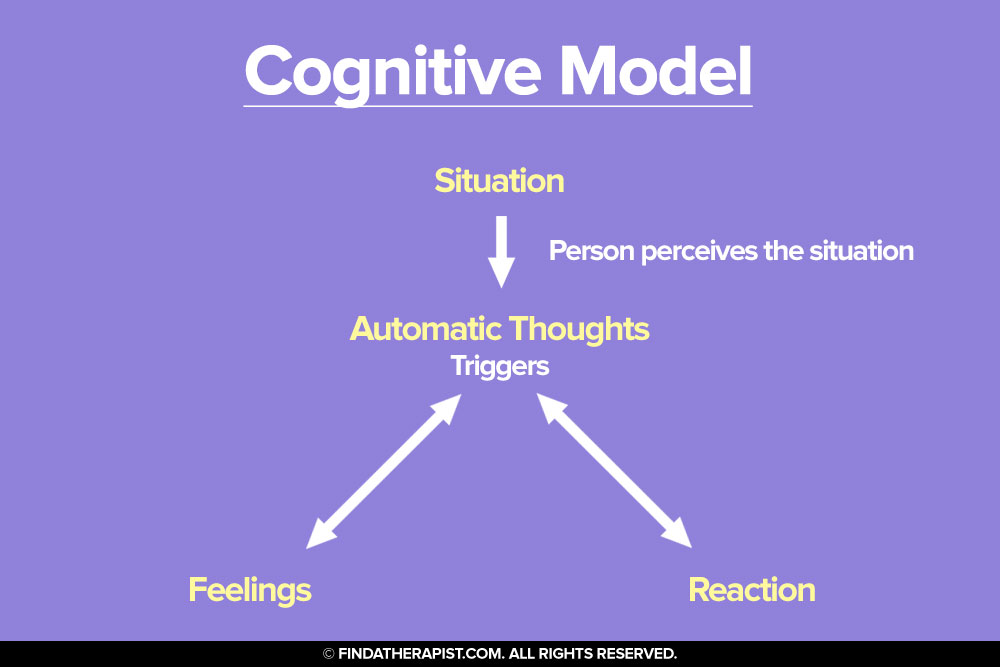
The basic concept of cognitive behavioral therapy revolves around the cognitive model. The cognitive model consists of a person’s thoughts, feelings, and behavior. It suggests that each is interconnected. Cognitive behavioral therapy focuses on life stressors in the moment and is geared toward problem-solving.
Cognitive behavioral therapy suggests that present problems should be the focus of therapy. It teaches that while past experiences are valid, the present is in the patient’s control.
The goal of cognitive behavioral therapy is to learn how to change the present perceptions. It aims to target and challenge automatic negative thoughts. With success, the patient learns how to reshape how they view themselves, the world, and the future.
Cognitive behavioral therapy looks for unhealthy patterns of thinking. It pinpoints areas where negative thoughts are affecting the patient. By focusing on thoughts in the present, the patient can identify how the thought patterns are affecting them.
Cognitive behavioral therapy shows a person how their automatic negative thoughts cause unhealthy thinking. With this realization, they become open to learning healthier thought patterns.
Contributions Of Dr. Albert Ellis
Dr. Albert Ellis is best known for his work with Rational Emotive Behavior Therapy (REBT). Ellis believed that therapy should focus on resolving emotional and behavioral issues. He took a cognitive approach to resolving issues with his patients.
In his work, Ellis developed a process to help patients identify and modify their negative beliefs. The goal of REBT is to change negative beliefs that trigger automatic negative thoughts. In doing so, a person learns how to challenge their negative thoughts and assumptions about the world.
According to Dr. Ellis, when people have negative assumptions about the world, they can behave irrationally. They have intense emotional reactions that cause them to act inappropriately. Ellis believed that if people could change their irrational thoughts, then their emotions and reactions would be less problematic.
The ABC model was originally developed by Dr. Ellis. Similar to cognitive behavioral therapy, REBT uses the ABC model as a blueprint for how people react to challenges.
Ellis believed that people make this critical mistake in thinking:
People tend to think that a challenging situation is the reason for their emotional upset. According to REBT, it is not the challenging situation that is causing the upset but instead the person’s perception of the situation.
REBT maintains that a person’s interpretation of events causes emotional upset and negativity. The upset does NOT come from the situations themselves. Ellis assumed that if a person could change the way they interpret challenging situations, their reaction would be less upsetting.
Challenging Irrational Beliefs
The first step in challenging irrational beliefs is to identify the source of irrational beliefs. Ellis found that these kinds of beliefs manifested in 3 ways:
- “I must”
- “I can’t”
- “I should”
Each of these statements that people tend to tell themselves causes a lot of negative self-talk. They imply incompetence and failure and trigger emotional upset and distress. They also cause avoidance and feelings of hopelessness.
These statements cause people to have unrealistic expectations of themselves. Unrealistic expectations can prevent growth and acceptance of the challenge ahead.
To challenge negative thoughts, a person must first overcome and conquer their negative beliefs. Ellis believed that a therapist should help their patients learn how to challenge their negative beliefs.
Finding the underlying source of a negative belief can help a patient learn how to challenge it. It is also important to learn how to identify negative thought patterns, just like in cognitive behavioral therapy.
Identifying and challenging negative beliefs is not easy. Even though it is not easy, it is a critical part of learning how to challenge negative thoughts. Learning how to challenge negative thoughts in response to challenging situations takes practice. It is a habit that requires a great deal of patience. It also requires an open mind and willingness to challenge your negative beliefs.
If the goal is achieved in REBT, a patient will be able to react more rationally to challenging situations. Their thoughts will be less negative and more objective or neutral. They will take their time before reacting and process their emotions in a healthy way. They will learn how to forgive themselves for their mistakes and accept that they are working hard to feel better. REBT set the path for cognitive behavioral therapy by establishing the ABC model and how to apply it to help people.
Key Components of Cognitive Behavioral Therapy
Cognitive behavioral therapy consists of key components. These components are used to help a patient understand how their cognitions affect their beliefs about the self and the world.
The following are key components in cognitive behavioral therapy:
The ABC Model
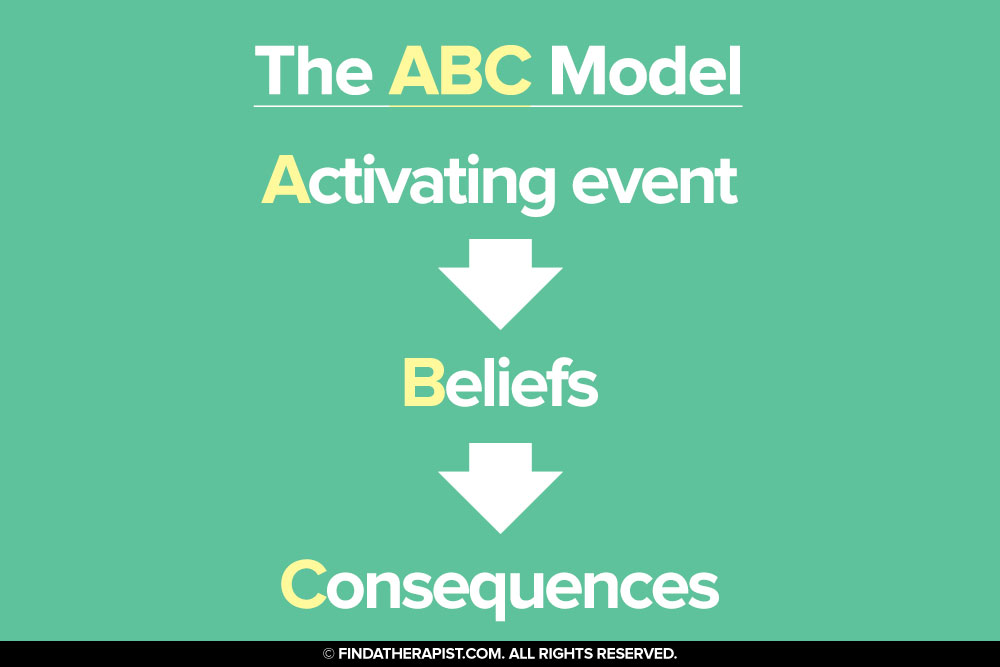
The ABC model was developed by Dr. Albert Ellis in the mid-1950’s. It breaks down how a person interprets a challenging situation into 3 steps:
- Activating event
- Belief
- Consequences
When someone has automatic negative thoughts, they see things through a negative lens. This causes them to take an objective situation and view it as being negative. They have automatic negative thoughts in reaction to how they believe they are affected by the situation. As a consequence, they feel and act based on their negative thoughts about the situation.
Dr. Ellis believed that a person’s negative view of a situation is what causes negative feelings and unhealthy behavior. The situation itself is not responsible for the person’s negative thoughts, feelings, and behavior. It is the patient’s negative interpretation of information that causes the negative reaction.
Cognitive Bias
The cognitive triad causes a cognitive bias. This means that a person’s view of the three components can affect how they interpret individual situations. If a person has a negative view of their cognitive triad, they will have a negative lens on life situations.
The cognitive bias causes the person to have distorted thinking. This distorted thinking causes a misinterpretation of information about the situation. It causes a person to ignore the positive and distort information into the negative. This can cause depression, anxiety, panic, and interpersonal issues.
A cognitive bias often involves cognitive distortions. A cognitive distortion is an erroneous pattern in thinking. Cognitive distortions cause you to think in the negative. They cause negative thoughts that fuel negative beliefs. When you think with cognitive distortions, you perceive a situation as negative. It causes you to get down on yourself. It also prevents you from seeing challenges reasonably. They cause upset emotions and unhealthy behavior.
Cognitive Distortions
Cognitive distortions are patterns of errors in thinking. There are several different types of cognitive distortions. Each cognitive distortion will negatively affect a person’s thoughts, feelings, and behavior.
Everyone experiences cognitive distortions sometimes. Typically people will have at least two cognitive distortions that they experience regularly.
The following are the different types of cognitive distortions a person may experience:
All Or Nothing Thinking (Always Or Never Thinking).
All-or-nothing thinking causes you to think in extremes. It is either always or never, everybody or nobody, or all or nothing.
Example: Travis feels that he can never get things right when dating.
“Why does this always happen to me?! Every time I try to make things work in a relationship I always say the wrong thing and mess it all up!”
Labeling.
Labeling is placing an assumed label onto someone, something, or yourself. The label causes you to have negative assumptions and expectations.
Example: Dan finds himself not feeling like it is worth it to study because no matter how hard he tries he believes that he is dumb.
“There is no point in studying. I am a stupid person.”
Focusing On The Negative (Filtering).
Focusing on the negative (filtering) is ignoring positive or neutral information about a challenging situation. People who filter only focus on what is perceived as negative.
Example: Ashley feels she has to be the life of the party to make friends and does not acknowledge all of the friends she made just by mingling and getting to know the people at the snack table.
“I have to be the life of the party. Otherwise, nobody will be interested in being my friend.”
The Shoulds.
The shoulds occur when you tell yourself what you should be/do, or should not be/do. It can extend to things that should (or should not) be/happen in the way that they are. This implies that you are less than or lack worth. It can also imply that you are helpless and not good enough. It causes frustration when situations are challenging or do not meet expectations, and can reinforce low confidence and poor self-esteem.
Example: Corina constantly finds herself feeling like she should be better and should not feel upset feelings because her life is not that hard.
“I should be better at this” or “I should not feel this way.”
Blaming.
Blaming things that are not responsible in reaction to an upsetting situation is a common cognitive distortion.
Example: Lorraine blames everything around her for her misfortunes.
“It wasn’t my fault I was late! I hit every light and the guy in front of me was driving really slow!”
Note: Blaming can also happen when a person blames themselves for things that were not their fault.
Predicting The Future.
Predicting the future is making negative predictions about how a challenging situation will resolve. This can include fantasizing about possible worst-case scenarios.
Example: Paul assumes that there is no way he can find success as a musician.
“If I pursue my music career I will fail. I will not have money to feed myself. I will be a loser and my family will be ashamed of me.”
Overgeneralization.
Overgeneralization is when you create impressions of an entire population based on your experiences with a small sample of individuals. This can be about anything: people, places, institutions, etc.
Example: Amanda assumed that all dogs are mean when the neighbor’s dog bit her leg.
“Get that dog away from me! It is going to hurt me, don’t let it come near me!”
Example: Whitney was cheated on by two of her ex-boyfriends.
“All men are cheaters. You can’t trust them.”
Mind Reading.
Mind-reading is assuming you know what others think about you. Mind-reading can make you feel like you are on everyone’s radar, and that people are paying more attention to you than they actually are.
Example: Tony assumes that everyone is uncomfortable around him in social gatherings.
“They must all think I am such a freak.”
Catastrophizing.
Catastrophizing is assuming that the worst will happen. When you catastrophize, you feel that the worst-case scenario will happen. You have catastrophizing thoughts about any potentially challenging situation.
Example: Lauren has a big exam tomorrow.
“If I fail this exam I will fail out of school. I will never be able to get a job and die poor and alone.”
Emotional Reasoning.
Emotional reasoning is when you use your emotions to draw conclusions and decide how to react. Emotions conflict with reason. Acting purely on emotion will cause problems.
Example: Zach has trouble controlling his anger.
“Fine! I don’t care about your reason why. If you’re going to bail on our plans last minute, then this friendship is over!”
Personalization.
Personalization is when you assume that something is about you even though it has nothing to do with you. People who personalize take most negative things personally. They assume they are considered the center of all issues, and they feel blamed for all challenges that arise.
Example: Jill assumes that Joseph’s short answers are about her when in reality Joseph is having a hard time at work.
“Why is he mad at me?! I didn’t do anything to him, and he shouldn’t be mad at me. If he’s going to be mad at me for no reason, then I will just not bother with him anymore.”
Jumping To Conclusions.
Jumping to conclusions is when you act too quickly based on your first impression. You draw conclusions based on your initial impression and do not take the time to think about the other information about the situation or how it affects you. You are reactive, and this reactivity causes you to act on initial impulse, rather than reason.
Example: Andrew assumes he already knows what his wife is going to say.
“And don’t tell me the leak is my problem because we both own this house!”
Who Cognitive Behavioral Therapy Can Help
Cognitive behavioral therapy was developed to explain and treat the cognitive process of depression. It has since been discovered that cognitive behavioral therapy can be used for other conditions. The following conditions are also affected by the cognitive triad and can be treated with cognitive behavioral therapy:
- Alcoholism
- Anorexia
- Anxiety
- Body dysmorphic disorder
- Borderline personality disorder
- Bulimia
- Conduct disorder
- Dependent personality disorder
- Depression
- Obsessive-compulsive disorder
- PTSD
- Social anxiety
- Substance use
- Trauma
Sponsored by

Find an affordable therapist online with 20% off from BetterHelp.
Click Here



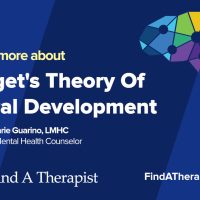

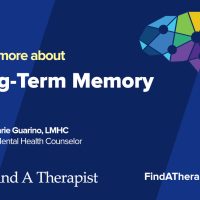
Leave A Reply